Brand guidelines and digital platforms
Although the most important and recognised right is the exclusive use of the mark, the unstoppable use of trademarks in the digital environment rose the attention to the integrity of the mark.
The integrity of a trademark is its capacity of being distinctive in the market and advertised as registered. If the owner cannot protect the integrity of the mark and control the misuse by third parties, it can dilute or “genericide” the mark, as happened with Xerox and Post It, which puts the brand investment at risk.
There are situations that third parties can use a registered mark, such as describing a food made with a branded product or to refer to a business’s products/services. Therefore, in these cases, the owner of a trademark cannot obstacle its use.
A solution for brand owners to guarantee the integrity of trademarks has been sharing brand guidelines for third parties regarding the use of registered trademarks. It is an extremely useful way to control fair use and reduce infringement actions.
The brand guidelines establish standards of the visual, ideology and identification of the mark with the upmost goal of guaranteeing the integrity of the mark. Ferrero S.p.A created a guideline for use of the trademark NUTELLA to businesses that use Nutella hazelnut spread on its recipes and products, as below:
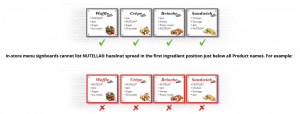
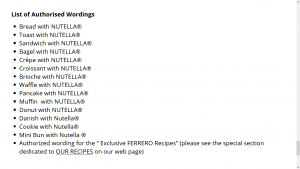
Boloco case:
Ferrero S.p.A. have previously engaged in legal discussions about the integrity of the trademark with a local Boston chain Boloco in 2012. The chain had product “Nutella milkshake” in their menu made with Nutella hazelnut spread.
According to Ferrero, Nutella does not endorse frozen beverages, but the product could be used in the milkshake as ingredient. Indeed, in the list of authorised products by Ferrero, there is no milkshake:

Considering the right of Ferrero to protect the term Nutella, the brand guidelines work as a pre-measure to guarantee the rights. Although the case was solved amicably, the chain stopped using Nutella as the ingredient of their milkshake, which is the downside of this case.
Other companies, such as Mastercard and Visa, also have guidelines. As global brands that appear in every single credit card machine and establishment, the guidelines demonstrate how the logos should be shown and positioned in credit cards, machines, and colours of their trademarks.
In summary, we verified the following common clauses in brand guidelines:
Minimum space or size when using with other marks or with other wordings.
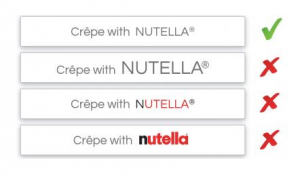
Colours of the mark that must be used.

Backgrounds and applications of the mark




Products that can or cannot display the mark.


Positioning of the mark.

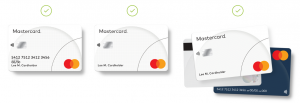
Agreement clause on the guidelines.

Brand guidelines and the digital media
For the past years, businesses have been using social media and online platforms to engage with consumers, sharing valuable content about the brand, telling its story, or offering deals designed to capture more market share. According to a Salesforce survey, 85% of consumers research before they make a purchase online, and among the most used channels for research are websites (74%) and social media (38%).
Online businesses have been creating brand guidelines to protect their logos and name. Some digital platforms, such as Netflix and Disney provide a licence to third parties that would like to use their trademarks. Disney has a website dedicated to request licences, while Netflix grants a limited licence that the user must agree to even before reading the guidelines:
Netflix grants You a limited, non-exclusive, revocable, non-sublicensable and
non-transferable license to display the Netflix Brand Assets in accordance with
these Terms. All use by You of the Netflix Brand Assets (including any goodwill
associated therewith) shall inure to the benefit of Netflix.
Under the terms of the licence, the person interested in using the Netflix brand must also send the material for approval and conform to their guidelines. Even without a signed agreement, access to the guidelines is considered a signed agreement. In addition to the licence, Netflix provides guidelines about the use and products that cannot display the trademark, such as doormats, disposable cups, and food:
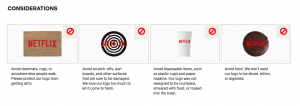
The acceptance of such guidelines happens when accessing the website, even before they can check said guidelines. Nevertheless, nothing prevents that the Netflix’s brand guidelines are used in fair use cases too.
Contrarily from the above, social media have unique features to their guidelines, aiming to define rules for users about format and display of the trademark to promote their business:
Facebook guidelines
“f” logo: can be used by itself, however, without any change on colour and size. Like button: Like button can only be used together with sentences such as “Like us on Facebook”. Facebook trademark: do not authorise use because it is the company’s name as well.
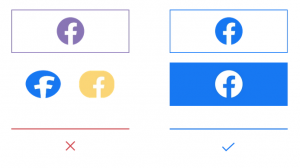
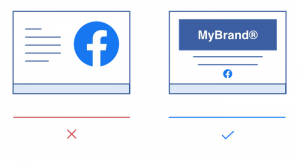
Instagram guidelines
Instagram’s icon can be in different colours. Instagram does not allow the use of Insta or Gram
connected with another brand. Only use Instagram to say that the business is on Instagram.
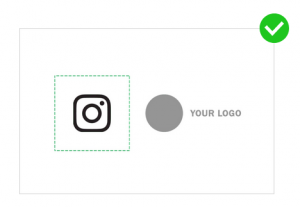
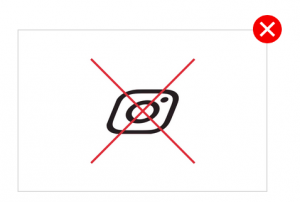
WhatsApp guidelines
Icons and trademarks related to WhatsApp cannot be combined with any other trademark or company name that not from WhatsApp. Direct links to the business contact and icons with
“message us on WhatsApp”.
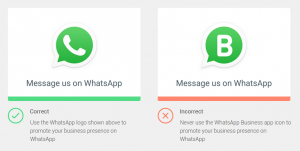
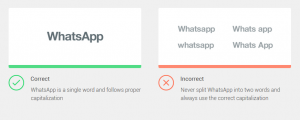
Twitter guidelines
Bird logo: Cannot be animated or make it talk, chirp, or fly. When pairing a handle or #hashtag with the Twitter logo, it must be in blue or white. Tweets: real and exist on the platform. Also, don’t alter the message.

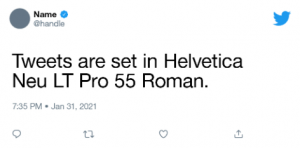
Social media’s brand guidelines follow the below structure:
- Available logos and icons to download if accepted the conditions of the guidelines.
- Do not allow substantial changes of the logos or name. These brand guidelines also prohibit modifications, maintaining the right of the platform to control the use. For example, no changes on colour, size, or no special effects.
- Do not allow associating the social media’s trademarks with the user’s brand in a way that seems they are endorsed by the social media.
- Social medias provide options on how to advertise the business’ presence with sentence such as “follow us”, “message us”, “like us” or connecting with the username.
- Guidelines on characteristic design of the platform or function, such as screenshots, usernames, and hashtags. Instagram sets standards for its icons, trademark and even screenshots. WhatsApp there are guidelines for the use of the screenshots and naming usage.
- A legal disclaimer of agreement with the guidelines or a box to confirm agreement, such as in the examples of Twitter and WhatsApp. The consent box provides to the platforms the confirmation of prior knowledge and prove for possible measure if any of the guidelines is not met.
In contrast to a license, the brand guidelines from social media do not provide any right
of exploring the mark:
WhatsApp doesn’t permit or license its trademarks, logos or other intellectual
property for use on merchandise like toys, apparel, accessories or packaging
without explicit prior written approval.
Under the terms of the licence, the person interested in using the Netflix brand must also send the material for approval and conform to their guidelines. Even without a signed agreement, access to the guidelines is considered a signed agreement. In addition to the licence, Netflix provides guidelines about the use and products that cannot display the trademark, such as doormats, disposable cups, and food.
Legal consequences
In 2013, Instagram amended the brand guidelines to state: “Don’t: Use ‘Instagram,’ ‘IG,’ ‘Insta’ or ‘Gram’ in your app name.” It is understandable that Instagram wanted to protect its trademark, since Instagram became distinctive and popular, and wanted to avoid dilution.
However, until the, Instagram allowed apps to use ‘Insta’ or ‘Gram’ to encourage developers
to create complementary apps to the platform and make users remember Instagram. Before the update on 2013, Instagram’s Terms of Use stated, “[w]hile you cannot use the word ‘Instagram’ or ‘IG’ in your product’s name, it’s ok to use one (but not both) of the following: ‘Insta’ or ‘Gram.’”
Unfortunately, the Terms of Use also stated, “we reserve the right to reject any use of these terms in connection with the use of the Instagram API,” which happened by deleting the statement regarding the approved use of either “Insta” or “Gram.”
App-owners who violate this new guideline started getting letters from Instagram requesting that they change their brand names after they have built their own goodwill and consumer recognition. Some of these developers, instead of changing the brand, shut down their apps because of the high costs that the change of the brand would imply.
Others changed the name, such as 6tagram to 6tag or Statigram to IconoSquare. In this specific case, Instagram might have been successful, but bringing up trademark infringement claims could be difficult due to the prior authorisation.
So, in summary, we can conclude that:
- Brand guidelines from digital platforms and social media preserve the integrity of the marks, including fair use by users.
- While digital platforms classify as licenses, social media is a unilateral authorisation of use, with the owner solely amending it.
- Although the brand guidelines can adapt as the brand evolves, there is risk of the brand guidelines exceeding the owner’s right to the fair use of the user. The best way to not fall under an infringement action is guaranteeing your business comply with the guidelines and check again from time to time so there is no change.
By: Flavia Mansur Murad Schaal and Isadora Schumacher Jeong.